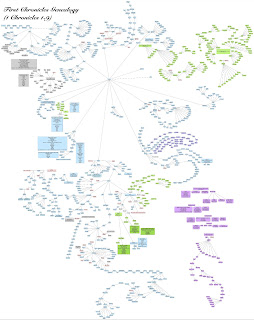Elijah's Ascent to Heaven [and a long digression into Enoch]
Though the following passage only briefly touches on Elijah, I could not pass up the exploration of noncanonical biblical literature.
Elijah
The prophet Elijah does not
die in the bible. Rather, he ascends into heaven in a whirlwind and chariot of fire. The reason for this, and what happens to Elijah after his ascent, is unclear. Indeed, it seems strange that the bible would relate a story about a person and not elaborate on such an astounding event. These ambiguities sparked a great deal of speculation in later literature, some of which even anticipates Elijah's return to earth. In canonical biblical literature, Malachi 4.5-6 mentions that the prophet will be sent "before the great and terrible day of the Lord." In this tale Elijah will reunite families before the day of the Lord. This restoration of the family would have been important as per Mosaic law, in which the sins of parents could ostracize later generations.
Enoch
One other man in the bible ascends to heaven: Enoch, an ancestor of Noah. There is much extrabiblical literature about Enoch, including the pseudepigraphic
Book of Enoch and
Book of Jubilees. All we know from the Genesis account is related in a mere seven verses in Genesis 5, only four of which relate to Enoch in particular. The verses in question appear in a passage that recounts the ten generations from Adam to Noah. With the exception of Enoch and Noah (about whom the narrative is primarily concerned), each section follows the same formula:
When A had lived X years, he became the father of B . A lived after the birth of B Y years, and had other sons and daughters. Thus all the days of A were Z years [=X+Y]; and he died."
Enoch's passage is unique in a number of ways. Of the ten generations spanning Adam to Noah, Enoch occupies the seventh. The number seven is symbolic in the Hebrew bible as suggesting completeness or perfection. Furthermore, the length of Enoch's life is 365 years. This number also suggests completeness - a complete year, to be exact. In addition, it is mentioned twice in the text that Enoch "walked with God." This by itself should not be taken literally; the phrase simply means that Enoch was a righteous man. His great grandson Noah was another man who "walked with God." However, the second appearance of this phrase is linked with very special descriptor that demonstrates Enoch's special status:
Enoch walked with God; then he was no more, because God took him.
(Gen. 5.24).
Unlike the other men listed, Enoch is not specifically said to
die. Where and why God took him is a matter of speculation, as it is for Elijah later on.
In later non-canonical literature, Enoch's story is developed and the symbols of completeness associated with him are expanded upon. Enoch becomes a secretary of God, and the first ever writer. In
Jubilees he pens a book that records all events of the history and future as it travels through cycles of Jubilees, which measure time in 49-year cycles: 7 "weeks" of years.
Click the above links to read the source texts, or check out the Wikipedia pages on
Jubilees and
1 Enoch to learn more about the texts themselves.
Elisha's Miracles
Elisha is Elijah's protege, and seems to serve as a reference for later tales about Jesus. Those who have read Christian scripture might notice some parallels. In fact, these charismatic powers are common to many biblical characters, including Moses. All references are to 2 Kings:
- Parts water (2.14)
- Purifies undrinkable water that is even unsuitable for crops [by putting salt in it, no less!] (2.19)
- Curses 42 boys so they are mauled by bears (2.23)
- Magically multiplies oil for a widow so she can pay her debts (4.1)
- Revives a Shunammite woman's son from death (4.8)
- Purifies a pot of stew made with poisonous wild vines and gourds (4.38)
- Feeds 100 men with 20 loaves of barley and some grain, and even has some left over (4.42)
- Cures Naaman, mighty warrior and commander of the Aramean army, of his leprosy (5.1)
- Afflicts his servant Gehazi with Naaman's leprosy (5.19)
- Pulls an ax head from the Jordan with a floating stick that has apparent magnetic powers (6.1)
